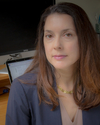The Two Michelangelos
- Autumn 2021
Syllabus Description:
SPECIAL TOPIC FALL 2021: THE TWO MICHELANGELOS
Did you know there were two Michelangelos? The celebrated Florentine sculptor, painter, and architect Michelangelo Buonarroti (1475-1564) and Michelangelo Merisi, the famous Milanese painter known to the world as Caravaggio (1571-1610). This new course will be co-taught by Professors Stuart and Estelle Lingo and will introduce you to the art of these two Michelangelos. By putting their careers in historical context, we will explore the challenges and ambitions that shaped their revolutionary works, with special attention to Caravaggio's artistic dialogue with his namesake and predecessor.
Prof. Stuart Lingo Prof. Estelle Lingo
Email: lingo@uw.edu Email: elingo@uw.edu
Office: Art 361 Office: Art 359
Office Hours: on Zoom Mondays 4:00-5:00 pm and by appointment
Lectures: Tuesdays and Thursdays, 10:00-11:20, Savery Hall 260
Teaching Assistants:
Or Vallah orvallah@uw.edu
Kira Sue kira2@uw.edu
Giordano Conticelli conticg@uw.edu
Section AA – Wed 9:30-10:20 Art 317 (Or Vallah)
Section AB – Wed 10:30-11:20 Art 317 (Or Vallah)
Section AC – Wed 12:30-1:20 Art 317 (Kira Sue)
Section AD – Wed 1:30-2:20 Art 317 (Kira Sue)
Section AE – Wed 9:30-10:20 Art 312 (Giordano Conticelli)
Section AF – Wed 10:30-11:20 Art 312 (Giordano Conticelli)
Covid Health + Safety Information:
o Covid-19 Prevention Plan for the School of Art + Art History + Design
o UW Covid-19 Face Covering Policy
o What Do I Do If I Feel Sick?
Learning Goals for the Course:
You will build introductory writing skills while learning about the art and legacy of Michelangelo and Caravaggio.
You will gain familiarity with some of the cultural, religious, and political environments that conditioned early modern production and use of the visual arts.
You will increase visual literacy and practice critical reading of art historical texts.
You will develop and refine skills of close observation, visual analysis, and verbal articulation in relation to the interpretation of art.
Course Lectures: Course lectures are in person and provide important content related to but different from the course readings. Lectures will be recorded and posted on Panopto.
Course Readings: Course readings are available in the “Readings” folder under Files on this Canvas site. Look for the day’s reading in the folder for each week, following the reading schedule below. Readings should be completed before the relevant class meeting.
Study Images: Our class Powerpoint shows will be posted for study and review after class sessions in the “Powerpoints” folder under Files on this Canvas site. In addition, your TA will provide you with a smaller group of study images to help you prepare for the unit exams.
Assignments: Course assignments include two unit exams (Nov. 4 and Dec. 9, non-cumulative, multiple choice); two short papers to be submitted for commentary and rewritten based on feedback; and a final paper (5 double-spaced pages) due Monday, Dec. 6. All papers should be submitted electronically to the course’s Canvas website.
Section Participation: Section meetings are a key component of the course; section writing exercises will be assigned regularly during the quarter and must be turned in according to the instructions given by your TA.
Religious Accommodations Policy: Washington state law requires that UW develop a policy for accommodation of student absences or significant hardship due to reasons of faith or conscience, or for organized religious activities. The UW’s policy, including more information about how to request an accommodation, is available at Religious Accommodations Policy. Accommodations must be requested within the first two weeks of this course using the Religious Accommodations Request Form.
Please see also the PDF with the School of Art + Art History + Design's Policies under "Files."
Grading Components:
First unit exam: 15%
Second unit exam: 15%
Two short papers with rewrites: 30%
Final paper: 30%
Section assignments: 10%
Make-up exams will not be given without documentation of illness, family emergency, etc. Extensions for written work will be granted only for similar circumstances. Otherwise, late papers and written assignments will lose 0.5 points per day (thus, a paper due Friday that would receive a 4.0 will receive a 2.5 if turned in on Monday). All course requirements must be completed for credit to be awarded.
SCHEDULE:
Thursday Sept. 30: Introduction to the Course
Week 1: Michelangelo Buonarroti, Divine Messenger and Monster of Art
Tuesday Oct. 5: Introduction to Michelangelo
Reading: Anthony Hughes, Michelangelo, London and New York, pp. 4-26
Thursday Oct. 7: Art for God: Altar and Cult Statue
Reading: Hughes, Michelangelo, pp. 54-62, 96 (from final three lines)-99.
Week 2: Michelangelo among the Pagans
Tuesday Oct. 12: Gods and Heroes
Reading: Hughes, Michelangelo, pp. 20-26, 43-52, 65-74.
Thursday Oct. 14: The Question of the Nude
Reading: Bernadine Barnes, Michelangelo and the Viewer in His Time, London, 2017, chap. 2, “The Heroic Body,” 53-55, 61 (from final paragraph)-66, 69 (from final paragraph)-73.
Week 3: Michelangelo and the Body
Tuesday Oct. 19: Incarnation and the Ideal Body on the Sistine Ceiling
Reading: Bernadine Barnes, Michelangelo and the Viewer in His Time, chap. 3, “Visions of Majesty: Projects for Pope Julius II.”
Thursday Oct. 21: Body as Power and Mask: The Medici Chapel
Reading: Bernadine Barnes, Michelangelo and the Viewer in His Time, London, 2017, chap. 4, “Power and Illusion: Commissions for the Medici,” 104-121.
Week 4: Michelangelo and the Spirit
Tuesday Oct. 26: Drawing Inward
Reading: Bernadine Barnes, Michelangelo and the Viewer in His Time, chap. 6, “Love, Desire, and Politics: Works for Private Viewers.”
Thursday, Oct. 28: The Judgment of Michelangelo
Reading: Hughes, Michelangelo, pp. 238-254.
Week 5: Michelangelo Out of Time
Tuesday Nov. 2: Art in the Dark Wood, 1560-1600
Reading: John Paoletti and Gary Radke, “The Demands of the Council of Trent,” in Paoletti and Radke, Art in Renaissance Italy, 3rd ed. (Upper Saddle River, 2005), 513-26.
Thursday Nov. 4: First Unit Exam
Week 6: Meet the Second Michelangelo
Tuesday Nov. 9: Introduction to Caravaggio
Reading: Troy Thomas, Caravaggio and the Creation of Modernity (London: Reaktion Books, 2016), chap. 1: “Early Life: Milan and Rome, 1571-99.”
Thursday Nov. 11: Veterans’ Day Holiday
Week 7: Caravaggio and the Body
Tuesday Nov. 16: Sensual Subjects and Michelangelo’s Legacy
Reading: Thomas, Caravaggio and the Creation, chap. 2: “The Modern Art Market; Early Patronage.”
Thursday Nov. 18: The New Science and the Body as Material Object
Reading: Thomas, Caravaggio and the Creation, chap. 3: “Early Roman Works.”
Week 8: Caravaggio and the Counter Reformation
Tuesday Nov. 23: Going Public: The Contarelli and Cerasi Chapels
Reading: Thomas, Caravaggio and the Creation, chap. 4: “A Stark Reality: Life and Mature Roman Works, 1599-1606,” and chap. 6: “Ambiguity.”
Thursday Nov. 25: Thanksgiving Day Holiday
Week 9: Caravaggio Out of Time
Tuesday Nov. 30: Controversies over the Altar
Reading: Thomas, Caravaggio and the Creation, chap. 5: “The Divine and The Human,” and chap. 7: “Oppositional Meanings.”
Thursday Dec. 2: Painting on the Run
Reading: Thomas, Caravaggio and the Creation, chap. 15, “Life in Southern Italy, 1606-10.”
Week 10: Caravaggio and the Photographic Option
Tuesday Dec. 7: What Happened to Caravaggio?
Reading: Thomas, Caravaggio and the Creation, chap. 14: “The Reception of Caravaggio’s Art.”
Thursday Dec. 9: Second Unit Exam




